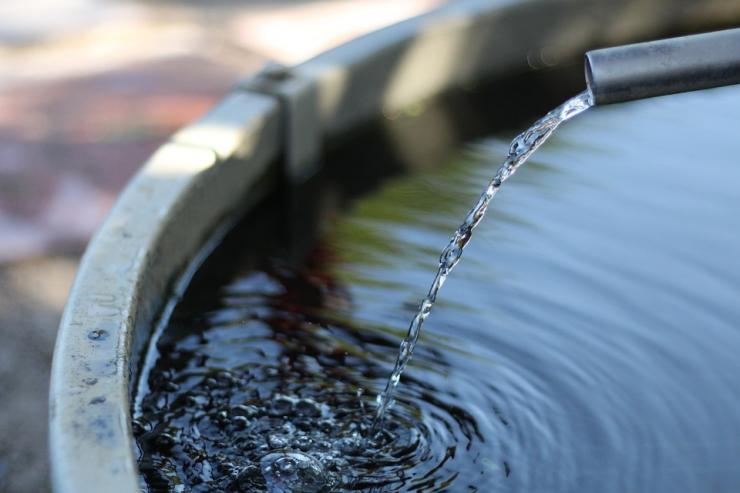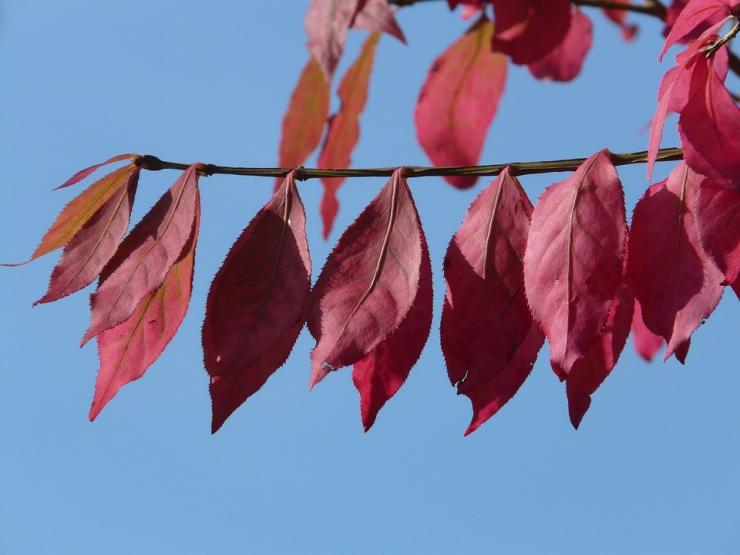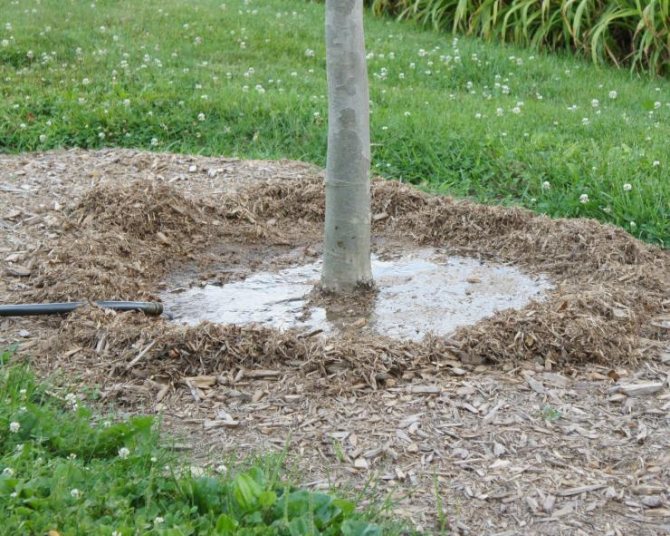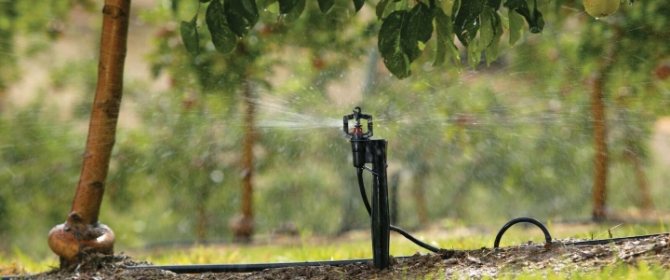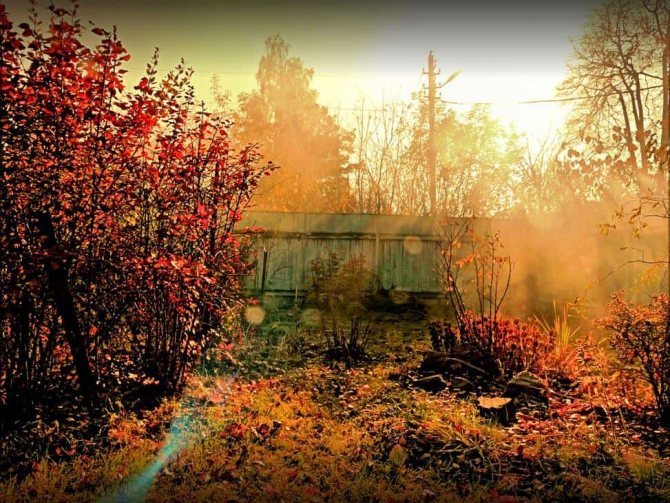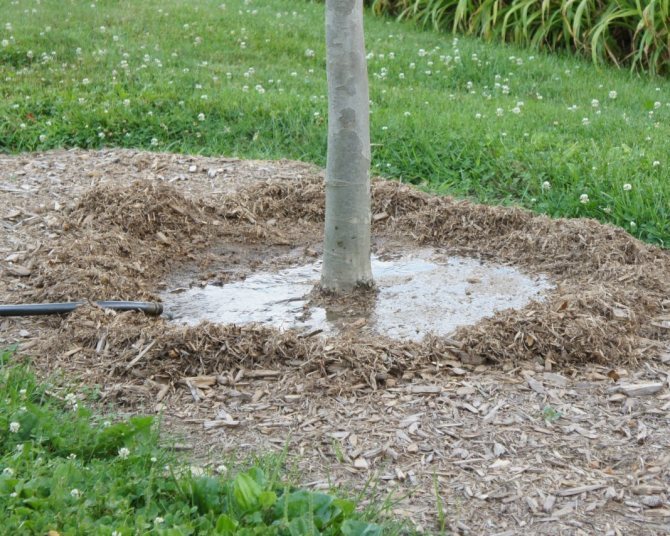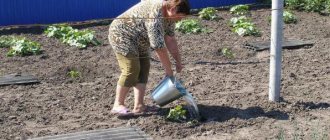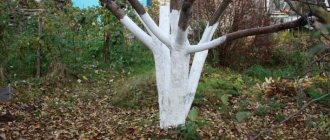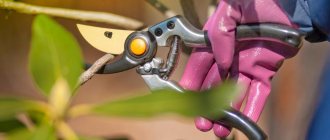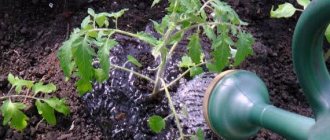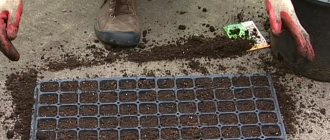What problems does water-charging irrigation solve in the fall?
The main task of water-charging irrigation is to wet the root system of plants as best as possible so that the winter goes well for them. Indeed, in winter, despite the dormant period, moisture from the trees evaporates anyway. And if the trees are not saturated with sufficient moisture, severe frosts literally dry up trunks, branches and needles.
We saturate plants with water for future use in order to:
- replenish summer moisture loss,
- exclude drying of trunks and shoots in deciduous plants, since moisture evaporates from the bark in winter,
- help to avoid yellowing of conifers in spring - evaporation in winter also occurs from the surface of the needles,
- protect the roots from winter frost: the moist lump that forms around the roots stays warm for much longer,
- to guarantee good plant growth in the spring of the new year,
- protect flower buds from freezing.
When to water trees in fall? It is necessary to wait for the plants to enter a dormant state: at least half of the foliage of deciduous plants must be shed.
Do I need to water the onions after planting in the spring. Watering onions in the open field
Watering onions outdoors is a must. Unlike growing onions in a greenhouse, where soil moisture is more easily controlled. Under the influence of the sun and winds, the soil in the open field dries out faster, which affects the yield of onions. In order to get a good harvest of onions every year, I recommend that you draw up a schedule in your notebook according to which you will always irrigate the onions in the open field. I think everyone now understands the importance of watering onions. Next, let's figure out how to water onions during the growing season.
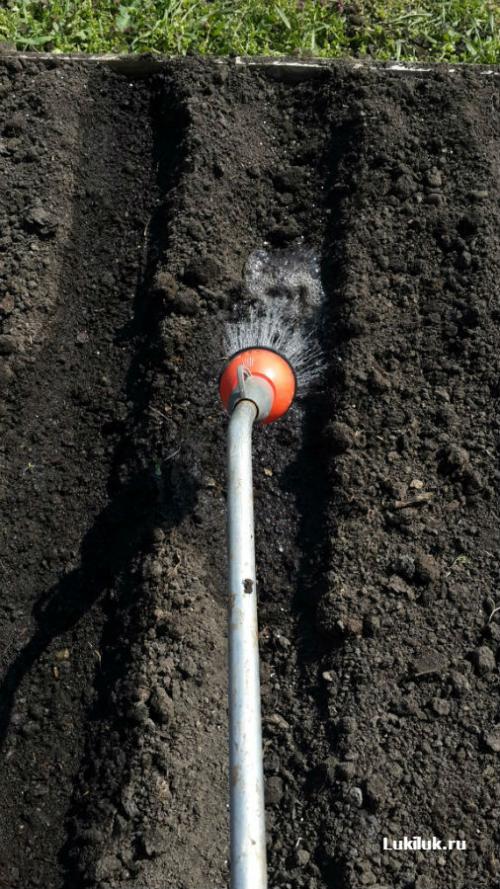
Photo: Watering onions in the open field
The very first watering of onions must be carried out before planting the seeds - "nigella" or seeding onions in open ground. And it is the soil that needs to be watered. After the soil has been prepared for planting, water it well. Good, but not for waterlogging the soil. This must be done so that the soil settles after irrigation and subsequently the planted onions do not end up on the surface. I recommend watering the garden at 20 liters per square meter. If you water everything with a watering can, then it will be easier for you to cope with the amount of water. If you are used to watering with a hose, then you can control the watering thanks to a simple method. Take a bucket and note the time it takes to fill it. Then, with further irrigation, move the hose along each square of the plot mentally counting the time. Personally, I do this, you can water it differently.
Norms of autumn watering of trees
Many people think that watering trees in the fall is a regular watering and 7 buckets will be enough for one adult plant. In reality, there should be a lot of water. The earth should get wet by 50-60 cm, and in large plants, even 80-100 cm.
Calculation of water is simple and the same for all plants - and fruit, and coniferous, and decorative deciduous:
- 3 buckets are enough for young 1-3 year old trees and shrubs.
- 7 buckets are required for older plants - at the age of 4-10 years.
- 10 buckets are needed for adult shrubs (over 10 years old).
- Pour 12 buckets under mature trees (over 10 years old).
It is advisable to stretch the watering 2-3 times so that the water is absorbed into the soil and not spread over the site. Take a break of 1-2 days between watering.
What not to do
The only difficulty in carrying out autumn watering is maintaining a sense of proportion. Water is good for plants, but no less good for air. In soil, these two substances are in antagonism. The liquid displaces the air and the roots begin to choke.
In practice, it is very rarely possible to water the soil in the garden to such a state that the trees begin to suffer from a lack of oxygen. To do this, you need to turn the site into a long-lasting swamp, which is not easy even on clay soil. It is generally impossible to pour sand and loam.
Autumn watering should not be carried out in areas where groundwater comes close to the soil surface. In such cases, trees, on the contrary, are planted on artificial elevations, otherwise their roots may suffocate.
Rules for water-charging trees
You can water with buckets. This is the easiest way to follow the norm. But what if there is a long distance from the water source to the plant or the tree is huge?
We use a garden hose.
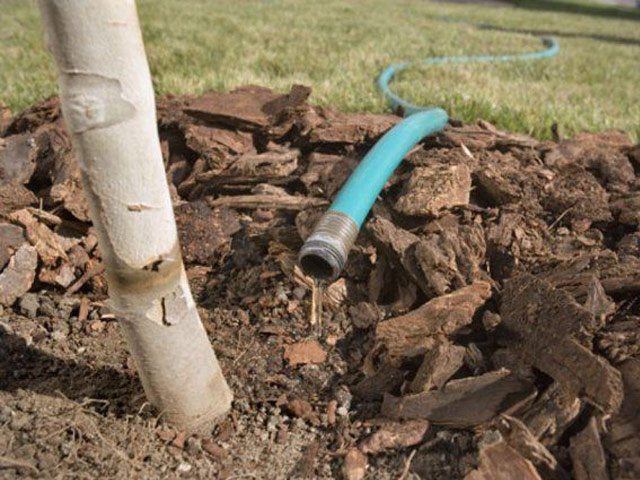

Pre-notice how long it takes from the hose to draw a 10-liter bucket. For example, a bucket is filled in 20 seconds, 10 buckets are needed for a plant, which means we water it with a hose for 3 minutes 20 seconds. This way, you can't go wrong with how much water is poured under the tree.
It is not recommended to pour water on the trunk of a tree or near the trunk (this is especially true for stone fruit crops prone to undercooking: cherries, plums, etc.). The optimal distance from the trunk is 15 centimeters.
After watering, the plant can be mulched with dry peat or bark.
Moisture-charging irrigation can be combined with the introduction of phosphorus-potassium fertilizers. They will help the trees to winter well and will help establish a good future harvest.
Do I need to water the garlic after removing the arrows. Do I need to water the garlic
This is a moisture-loving vegetable crop, and if the soil is dry, green feathers turn white. Lack of soil moisture negatively affects the taste of the heads. With insufficient irrigation, poor maintenance of the beds, chemical reactions are inhibited at the stage of vegetation and growth.
Effect of watering on yield
Regardless of the growing region, the beds must be irrigated with sufficient water. The growth of a plant is also influenced by regional climate features, in particular, the amount of natural precipitation. Regular watering of garlic is a kind of medical aid to the bulb culture. And it must be carried out in compliance with all the rules to obtain a bountiful harvest.
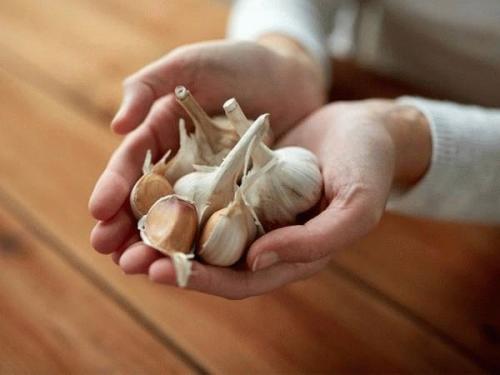

When to start watering
The peak demand for water occurs after planting the plant in open ground. For the manifestation of the first shoots, soil moisture must be at least 80%, therefore, great importance is attached to the first watering.
Two weeks after sprouting, irrigation should be done every 5-6 days, especially in hot weather. No additional water is required during the rainy season. Watering intensity increases as the garlic releases feathers and cloves begin to form. In the future, the soil is moistened as the top layer dries.
When to stop watering
After each moistening of the soil, you need to carefully inspect the beds: if the bulbs are bare, they should be covered with earth. This recommendation should be adhered to during the rainy season. As the cloves form and mature, watering is reduced.
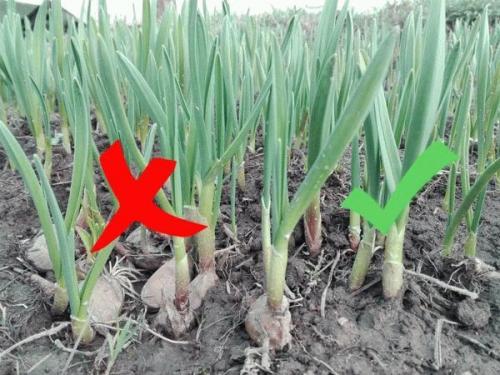

Whether it is necessary to stop moistening the soil and when depends on the purpose of growing garlic:
- To extend the keeping quality in August, watering should be stopped 20 days before harvesting so that the garlic does not rot and deteriorate from excess water.
- For raw processing, irrigation is completed in 5-7 days.
Watering seedlings in autumn
A very important point.If you do not carry out water-charging irrigation under the newly purchased and planted plants, you can pay for it. Saplings may simply not take root. It would seem that it is a young seedling (literally a couple of twigs), but it is necessary to pour 30-40 liters of water under it. And that's why.
First, the soil particles will stick tightly to the roots, and the roots will function normally in the future. Secondly, a seedling, which can be threatened by frosts, due to such deep, good watering, will winter well.
Remember: water-charging watering is one of the main activities when caring for plants in the fall. It must be done every year. And fear not: a wet plant will not freeze!
Water the plants in the fall and they will come in during the winter, hydrated, strong and ready for winter and spring challenges.
Do I need to water the grapes during the ripening of the berries? How much water do you need?
There are no exact norms for watering times and the amount of water used. The scope and timing of these works is influenced by a whole range of factors.
- Features of the climate. In arid regions with seasonal droughts, irrigation is carried out more frequently.
- Soil composition. On light sandy soils, the intervals between waterings are shorter and the portions are smaller. Chernozem and clayey soil are irrigated more abundantly, but less frequently.
- Weather. Even in the same region in different years, the amount and volume of irrigation differ depending on the temperature indicators and the amount of precipitation.
- Grape sort. For late-ripening plants, the amount of watering is usually higher.
- The age and size of the vine, the number of bunches. For example, mature bushes in summer, during the ripening of berries, need more irrigation than two-year-old seedlings in the same period.
- Watering method.
After a snowless winter, during spring watering, each bush may need about 250 liters of water. Approximately the same amount of moisture is needed if the weather remains dry for a long time, during the main summer watering. The bush consumes a lot of water when the berries are poured.
During vegetative irrigation, on average, vineyards need about 50 liters of water per square meter of area, usually in the range from 40 to 70 liters. On sandy and sandy loam soils, the rate is increased by about one and a half times.
The watering depth should be at least 40 cm so that the plant does not form a superficial root system that is prone to freezing and does not provide the grapes with the necessary moisture and useful nutrients.
Signs of waterlogging, when they appear, you should reduce watering:
- increased growth of shoots and a large number of stepchildren;
- poor aging of the vine;
- watery berries with low sugar content;
- atypical colors in dark grape varieties.
Advice
Experienced gardeners take a soil test under the bush to determine if the plant needs to be watered. The soil is squeezed in a fist - sufficiently moistened earth will not crumble after you open your hand.
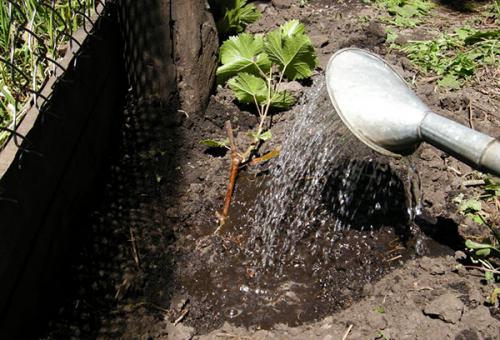

Temperature and time
The optimal time for autumn irrigation is October and the first half of November. The event must be carried out after the beginning of the leaf fall.
Important!
Abundant irrigation is not carried out until the leaves begin to fall. This can provoke the growth of new branches and buds, which will adversely affect the wintering process.
As soon as the air temperature dropped to + 2-3C, and the leaves began to fall off, it was time for autumn water procedures.
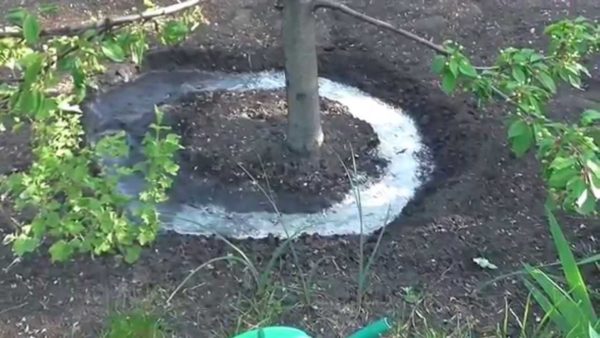

Determining fluid requirements
Do fruit trees need to be watered if the fall is rainy? In a dry summer, autumn rains will not be enough to fully nourish the earth.
Important!
The depth of water penetration into the ground should be between 1 and 1.5 meters.
Before watering trees in the fall, you need to understand the degree of soil moisture. First, a small hole is dug between the trees. Its depth ranges from 30 to 50 cm.The condition of the soil in the hole will show how moist the soil is and how much water is required.
After digging a hole, the grower performs a simple test. He takes a handful of earth and squeezes it in his hand. When a dense wet lump saturated with liquid forms, it is not necessary to moisten the ground. If the earthen lump is dense, but dry (does not leave a wet mark on a piece of cloth), watering the garden is necessary, with a 30% reduction in water consumption. If the soil is crumbly, and it is impossible to make a lump of it, it must be moistened.


